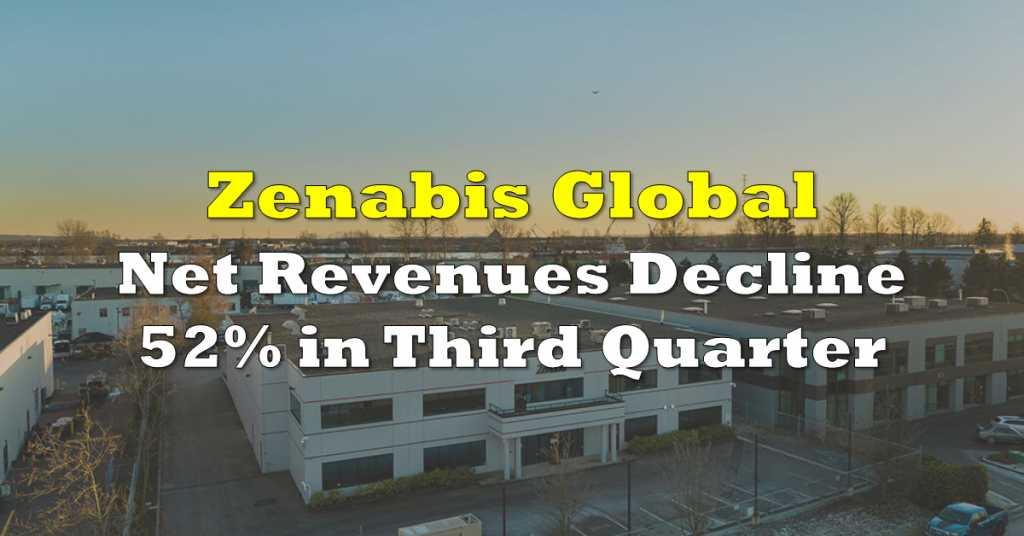Earlier this week Zenabis Global (TSX: ZENA) alerted the market that they would be conducting a rights offering at a price of $0.15 per common share. At the time, the offering was over a 70% discount to the current share price of the equity. In the time since the announcement, theories have flown about the sector as investors try to make sense of the deal.

One of the most common theories, is that the rights offering is a form of “poison pill” being conducted by the company to prevent a hostile takeover. The line of thinking from Zenabis investors essentially touts the line that this is a “flip-in” poison pill. For those that are unaware, a poison pill is a method for a public issuer to prevent a third party from taking control of the firm via a hostile takeover.
With respect to the “flip-in” method, it’s broken down nicely by Investopedia as follows:
A “flip-in poison pill” strategy involves allowing the shareholders, except for the acquirer, to purchase additional shares at a discount. While usual investors purchase the additional shares as it provides them with instantaneous profits, the practice dilutes the value of the limited number of shares already purchased by the acquiring company. This right to purchase is given to the shareholders before the takeover is finalized, and is often triggered when the acquirer amasses a certain threshold percentage of shares of the target company.
Source: Investopedia
There’s a few issues with this in the case of Zenabis. First and foremost, no party has stepped forward to indicate that they are interested in performing a hostile takeover of the public issuer, nor have any early warning reports been filed as of late indicating that anyone has quietly amassed a position of 10.0% or higher. Rather, on a net basis major security holders have actually been selling overall, which is largely a result of the former CEO of the firm dumping a portion of his position.
Second, if a third party had already begun attempting to acquire a sizable position in Zenabis, they too would receive rights to acquire shares provided they had a position as of October 30, which is the date of record for the transaction. With the date of record being roughly a week from the announcement, the third party would actually be able to amass a larger position at a lower cost basis thanks to the corresponding cratering of the equity.
While the thought of a hostile takeover of sorts may appear as a silver lining to some, the reality is that the offering is a means of Zenabis raising funding to continue its operations. While the firm acknowledged within the press release that it has sufficient capital, earlier last week it indicated that not all was going to plan. First, expansion of its Langley facility has been delayed as a result of construction going over budget. Second, the firm has struggled to hit operational targets for new packaging equipment. Both issues result in the need for additional capital to keep its operations going.
Zenabis in its latest financial reports, which are for the period ended June 30, 2019, indicated that it has $8.67 million in cash, out of total current assets of $60.23 million. Concurrently, $36.92 million in accounts payable were outstanding, with total current liabilities of $90.08 million. The result, is a working capital of ($29.84 million) – a precarious position at best.

Investors will be quick to point out however that the firm has had some notable changes in the time since it last reported. First, its signed a combined $40 million worth of supply agreements with Tilray Inc and Starseed Medicinal, wherein Zenabis was given cash up front while product will be delivered over a number of years. Second, the firm has managed to push out certain debts from October 2019 to that of June 2020, while increasing the total debt on certain senior secured notes from $25 million to $50 million. While still marked as current, it gives the company a few extra months to come up with the cash to pay it off.
Despite the reorganization of certain debts, approximately $24 million in secured convertible notes are believed to have come due in October. With no indication from Zenabis that the due dates of such debt was pushed out, it can be assumed that it was paid off – putting a serious dent in the cash position of the issuer. Further to this, the firm has to now work towards paying off debts owed to Tilray and Starseed through self-funding the working capital requirements of such agreements. Although considered to be “unearned revenue”, the capital has likely been already consumed to a certain degree for operations. Otherwise, such agreements would not have been entered in the first place.
The final result, is that the rights offering was likely a means for Zenabis to hopefully acquire additional funds from the capital markets. With multiple secured debts on its facilities, traditional lenders are likely worried about the ability for the firm to service any additional loans. Furthermore, without the ability to get first ranking on secured debts, should the company default on its current borrowings new lenders would struggle to receive back what they are owed. Thus, a return to the capital markets, in any form, was one of the few options left on the plate for Zenabis to obtain further capital for operations.
Zenabis Global closed Friday’s session at $0.26 on the TSX exchange.
Information for this briefing was found via Sedar and Zenabis Global. The author has no securities or affiliations related to this organization. Not a recommendation to buy or sell. Always do additional research and consult a professional before purchasing a security. The author holds no licenses.









